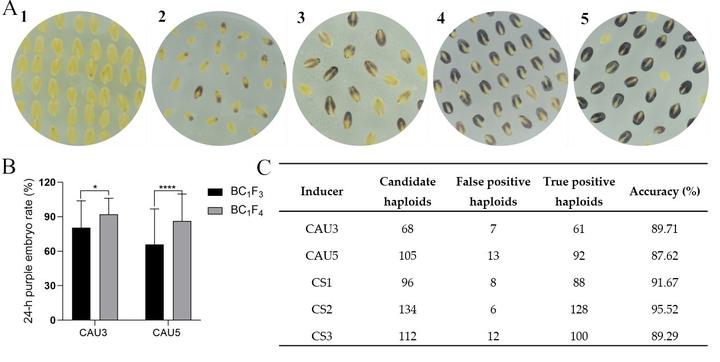Development of In Vivo Haploid Inducer Lines for Screening Haploid Immature Embryos in Maize
 Image credit by Chen Chen
Image credit by Chen Chen
Abstract
Doubled haploid technology is widely applied in maize. The haploid inducer lines play critical roles in doubled haploid breeding. We report the development of specialized haploid inducer lines that enhance the purple pigmentation of crossing immature embryos. During the development of haploid inducer lines, two breeding populations derived from the CAU3/S23 and CAU5/S23 were used. Molecular marker-assisted selection for both qhir1 and qhir8 was used from BC1F1 to BC1F4. Evaluation of the candidate individuals in each generation was carried out by pollinating to the tester of ZD958. Individuals with fast and clear pigmentation of the crossing immature embryos, high number of haploids per ear, and high haploid induction rate were considered as candidates. Finally, three new haploid inducer lines (CS1, CS2, and CS3) were developed. The first two (CS1 and CS2) were from the CAU3/S23, with a haploid induction rate of 8.29%–13.25% and 11.54%–15.54%, respectively. Meanwhile, the CS3 was from the CAU5/S23. Its haploid induction rate was 8.14%–12.28%. In comparison with the donor haploid inducer lines, the 24-h purple embryo rates of the newly developed haploid inducer lines were improved by 10%–20%, with a ~90% accuracy for the identification of haploid immature embryos. These new haploid inducer lines will further improve the efficiency of doubled haploid breeding of maize.